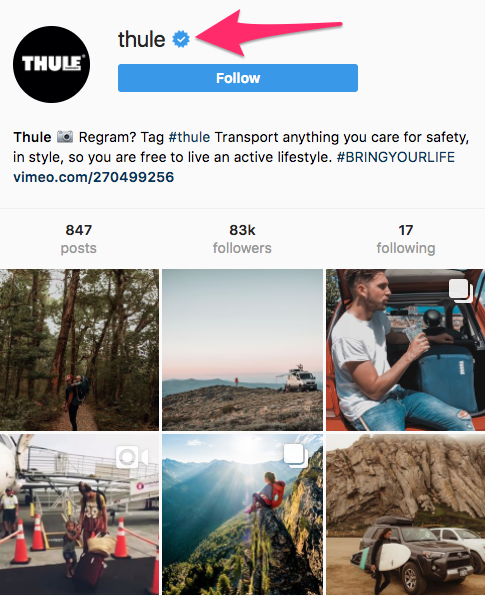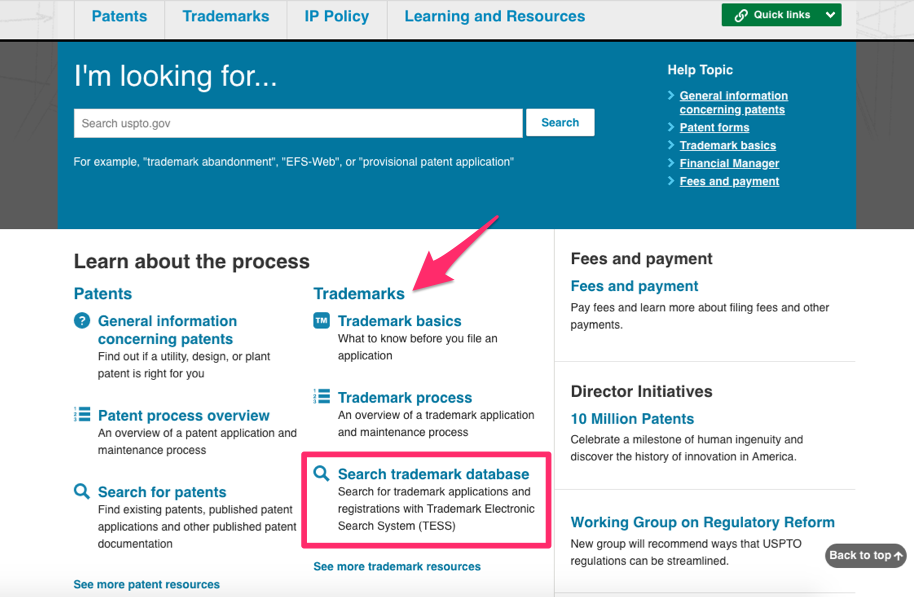So you’ve got a great idea for a new business.
You took the time to write a business plan for your startup. After long and grueling months of conducting market research, building prototypes, and analyzing your competition, you’re finally ready to turn this plan into a profitable business.
You even mapped out how you’ll raise the funds to get your company off the ground.
But before you can proceed any further, you need to name your startup company.
You may have a few ideas already. But how do you know if a name will actually work in the real world?
Naming your startup may seem minor, but it’s one of the most important—and most underrated—parts of your business. This name will be tied to your brand identity for years. You want to get it right at the start.
Otherwise, you’ll face major headaches if you try to rebrand later.
Use the tips below to simplify the process and choose a name you can grow with.
16 Steps to Name Your Startup
Use this guide as a checklist before you finalize your name.
- Keep it short
- Make sure it’s easy to spell
- Don’t restrict growth
- Check the domain name
- Be original
- Say it out loud
- Ask for feedback
- Research social media profiles
- Make it catchy
- Search the Secretary of State records
- Do trademark research
- Make it relevant
- Keep your logo in mind
- Take advantage of brainstorming tools
- Don’t drive yourself crazy
- Make sure you’re happy with it
Step 1 – Keep it short
The name of your business should roll off the tongue and be easy to remember.
People shouldn’t need to pause for breath halfway through saying it. Think of brands that dominate worldwide.
Nike. Apple. Walmart.
A UK study once found the average registered company name in its sample had 22 characters, with more than half falling between 17 and 24.

That’s longer than “Apple” or “Nike,” but still concise. The point: avoid sentence-length names.
Two words often work great—think Waffle House or Quick Sprout—because they’re short, punchy, and memorable.
Short names are easier to recall, easier to type, and easier to brand across logos, packaging, and ads.
Step 2 – Make sure it’s easy to spell
Put yourself in your customer’s shoes.
Let’s say they hear your brand name on a podcast or from a friend. They search for it later, but can’t find you because the spelling is unintuitive.
Favor names that are spelled exactly how they sound.
Even if someone sees your name in print, they might not recall the quirky spelling when they type it into a browser.
Avoid gimmicks like using “8” for “ate” or swapping “Z” where an “S” belongs. Clarity beats cleverness.
Step 3 – Don’t restrict growth
Today your startup might focus on a specific product, location, or niche. Your name shouldn’t box you in.
If you sell men’s jeans, don’t call the company “Jeans for Men.” What happens when you add shirts, hats, or women’s apparel?
Location-based names can create the same issue. “Tuxedo Shop of Seattle” gets awkward when you open in Chicago or San Diego.
If you want a local tie-in, consider a street or landmark that still feels flexible—and is easy to spell.
Step 4 – Check the domain name
Once you’ve got a frontrunner, check domain availability right away.
Use an instant search on a registrar like Domain.com to see what’s available and what’s taken.
.com remains the most universally trusted extension and is usually your best bet. That said, industry-appropriate TLDs like .io, .ai, or .app are widely accepted today. If you go that route, keep the domain identical to your brand name and avoid obscure extensions that look spammy.
Avoid mismatched names like “YourBrandOnline.com” if “YourBrand.com” is taken. If you can’t acquire the ideal domain at a reasonable price, it’s often wiser to pick a different brand name.
Step 5 – Be original
Your name should be distinctive and easy to tell apart from competitors.
Overused formats like “John’s Plumbing” blur into a sea of similar names.
A unique name helps prevent confusion, reduces misdirected traffic, and strengthens your ability to protect the brand.
Step 6 – Say it out loud
A name can look great on screen and fall apart when spoken.
Make sure it’s easy to pronounce and doesn’t sound like unrelated—or inappropriate—words when said quickly or in different accents.
Test it on voice assistants, too. If Siri or Alexa can’t recognize it reliably, customers may struggle as well.
Step 7 – Ask for feedback
You don’t have to name your company in a vacuum.
Brainstorm a wide list, then narrow to five to ten finalists.
Share the shortlist with your team, partners, trusted customers, and a few friends. Ask how each name makes them feel, how they’d spell it, and what industry they assume you’re in.
If one option consistently rises to the top, give it extra weight—but probe any strong objections to uncover risks you missed.
Step 8 – Research social media profiles
This goes hand-in-hand with your domain search.
You want consistent branding across platforms. Check whether the same handle is available everywhere you plan to be active.
Here’s an example from Thule. Let’s look at its Facebook page first:

And now let’s check out its Instagram profile:

As you can see, the company uses @thule everywhere.
Lock down matching handles before you announce your name. Mismatched handles create friction, confuse customers, and dilute brand recall.
If a handle is taken on one platform, you can ask the owner if they’re open to selling. If not, consider a small, meaningful modifier (like get or try) across all platforms—or choose a different name entirely to keep things consistent.
Step 9 – Make it catchy
Your brand name should stick. Aim for memorable, not generic.
Think ahead to campaigns and taglines. Does the name pair well with a slogan? Is it easy to rhyme or alliterate if needed? Can you picture it in headlines and on merch?
There’s no perfect formula for “catchy,” but gut checks plus honest feedback will tell you whether a name has spark.
Step 10 – Search the Secretary of State records
When you’re ready to register, your state will require a name that’s distinguishable from existing businesses.
In the US, search your state’s Secretary of State database to ensure your name isn’t already taken or too similar to a current LLC or corporation.
Names that are “confusingly similar” may be rejected. Many states also restrict certain words (like “bank,” “insurance,” or “university”).
Consider hiring a business attorney or formation service to handle filings and confirm compliance before you print business cards.
Step 11 – Do trademark research
Protecting your brand starts before launch.
Do a search on USPTO.gov to see whether you can trademark it.

Search for existing marks in your category and closely related classes. If a similar name is already registered for comparable goods or services, pick something else to avoid conflicts and expensive rebrands.
Step 12 – Make it relevant
Don’t pick a random word that has nothing to do with your audience or value—especially early on.
Your name can be evocative (it hints at a benefit) or descriptive (it says what you do), but it should still make sense. If your company focuses on internet security, “Bunny Ears LLC” sends the wrong signal.
Ask: what do we want people to feel and assume when they first hear our name? Aim for relevance without being so literal that you limit future growth.
Step 13 – Keep your logo in mind
Your name will live inside a logo, favicon, app icon, and social avatars. Think visually while you brainstorm.
Different color schemes can impact sales. Visuals are processed faster than words, and a distinctive mark boosts recall.
Think about McDonald’s. The golden “M” arches are instantly recognizable.
Ask yourself: will this name translate into a simple, memorable mark? Can it be read at small sizes and still feel like us?
Step 14 – Take advantage of brainstorming tools
If you’re stuck, let technology help.
Use a tool such as Namechk to search for domain names and social media account handles. Or try Naminum to choose a name based on specific themes.
But one of my favorite tools is from Shopify.
This business name generator sparks ideas while checking domain availability at the same time. You can also use AI tools like ChatGPT to generate themes, synonyms, foreign-language roots, and story-driven options—then run the best ones through legal and availability checks.
Step 15 – Don’t drive yourself crazy
Picking a name matters, but it shouldn’t stall your launch.
Give yourself a defined window to decide. Perfection isn’t the goal—fit is.
Move forward if:
- all the pieces line up
- the domain is available (ideally the .com or a strong, relevant alternative)
- matching social handles are available or consistently adjustable
- feedback is positive and clear
- you’re able to trademark it and meet state requirements
Step 16 – Make sure you’re happy with it
The name of your startup is something you’ll hear, say, write, and think about constantly.
If you don’t like it, don’t use it. This startup is your baby—you wouldn’t choose a baby name you dislike.
Choose a name you can champion with confidence. Your conviction will come through in every pitch, email, and ad you create.
Conclusion
What’s in a name? A lot.
Your startup’s name becomes your identity. Don’t treat it as an afterthought.
Whether you’re brainstorming from scratch or validating a favorite, use the steps above to pressure-test your ideas for clarity, availability, legality, and long-term fit.
Take the time now to get it right, and you’ll avoid costly rebrands later—and launch with a name you’re proud to grow.
